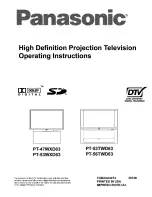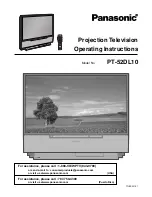
The CB should be closed and ready.
3.
If external control
On/Off is connected, check that it works.
4.
Set
Operation to ExternalCtrl, and use that control to switch On and Off, and check the
state of the function.
7.7.3.3
Verifying the auto-reclosing function
GUID-F6492DA7-B8E7-42CB-B4ED-A4BF1112C9BD v3
Select the test cases to be run according to what is applicable to the particular application. It
can be, for example, three-phase single-shot reclosing or two-shot reclosing. Below a case
with three-phase single-shot reclosing is described.
1.
Set
Operation = On.
2.
If SESRSYN is not to be operated, ensure that the SYNC input is activated.
If the SESRSYN function is to be included, ensure that SESRSYN is supplied with the
appropriate AC quantities.
3.
Simulate CB closed position by closing switch SC to make the BR relay start.
4.
Simulate CBREADY by closing the switch SRY, and leave it closed.
5.
Inject AC quantities to give a trip to the BR and to the START input.
Observe and preferably record the operation. The BR relay shall trip and reclose (start).
After reclosing, the SRY switch can be opened for about 5 s and then closed again.
The auto-reclosing open time and the sequence should be checked, for example in the
event recording. Check also the operation indications (disturbance report) and the
operation counters. Main menu/Tests/Function status/STBRREC (79, 0->1)/STBRREC:1
Should the operation not be as expected, this should be investigated. It could be caused
by an inappropriate setting or missing condition such as CBREADY (or SYNC at three-
phase reclosing).
6.
Repeat the sequence by simulating a permanent fault.
Shortly after the reclosing shot a new fault is applied. If a single-shot reclosing program
is selected, there shall be one reclosing operation and then blocking of the auto-reclosing
function for the set Reclaim time.
Before a new reclosing sequence can be run, the CBREADY and CBPOS (CB closed) must
be set manually.
7.7.3.4
Checking the reclosing conditions
GUID-F79FC408-2FC2-4B9E-B104-F09621E0F9A7 v1
When checking the influence of a releasing condition it is suggested to first run a sequence
with the condition fulfilled. When the condition signal is removed, and a new sequence is run, it
indicates that the result was due to the changed condition. In case of a blocking signal the
procedure should be similar. Start without the blocking or inhibit signal, and then run a
sequence with the blocking or inhibit signal added.
7.7.3.5
Checking the influence of the INHIBIT signal
GUID-98F60D47-AD40-4D23-81CA-C31CAA776799 v1
1.
Check that the auto-reclosing function is operative, for example, by making a reclosing
shot without the INHIBIT signal.
2.
Apply a fault and thereby a START signal. At the same time, or during the open time,
apply a signal to the input INHIBIT.
3.
Check that the reclosing sequence is interrupted and no reclosing takes place.
7.7.3.6
Check closing onto a fault
GUID-408256CD-5C78-44D2-AAF3-AE6BCAB8C64A v1
1.
Check that the closing function is operative, for example by making a reclosing shot.
1MRK 505 293-UEN B
Section 7
Testing functionality
Breaker protection REQ650
91
Commissioning manual
© Copyright 2013 ABB. All rights reserved
Содержание REQ650 1.3 IEC
Страница 1: ...Relion 650 SERIES Breaker protection REQ650 Version 1 3 IEC Commissioning manual ...
Страница 2: ......
Страница 12: ...6 ...
Страница 20: ...14 ...
Страница 28: ...22 ...
Страница 40: ...34 ...
Страница 42: ...36 ...
Страница 116: ...110 ...
Страница 123: ...117 ...













































